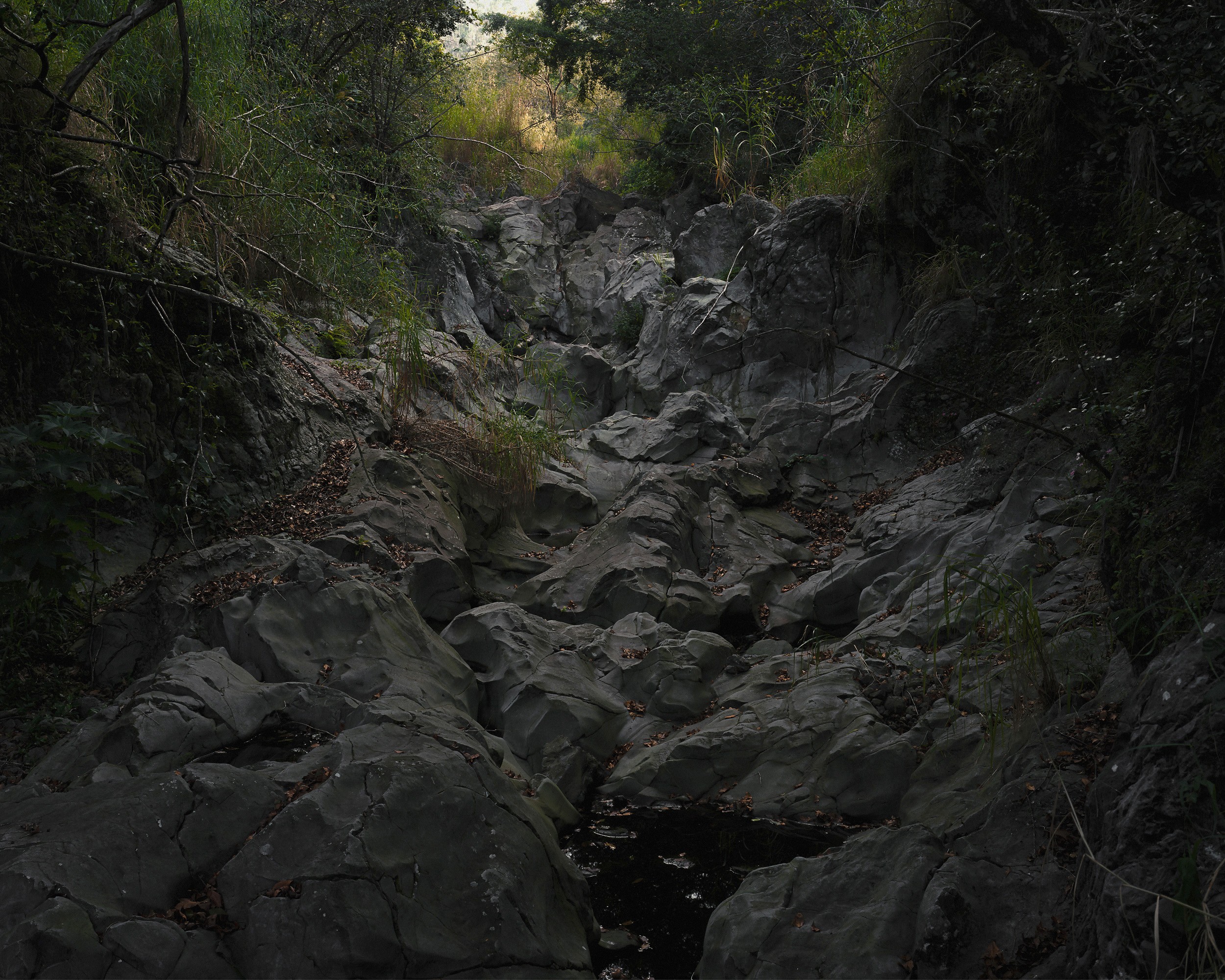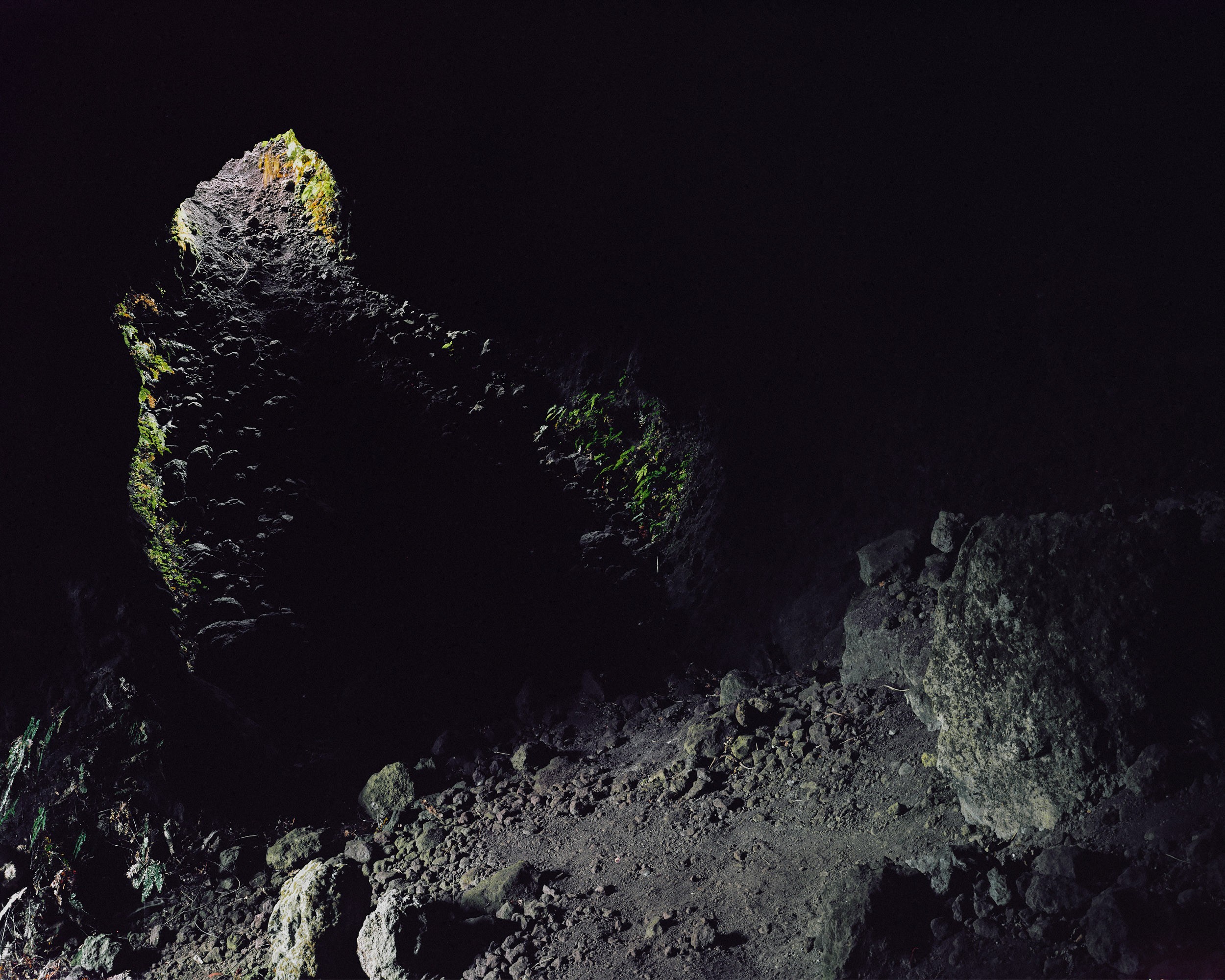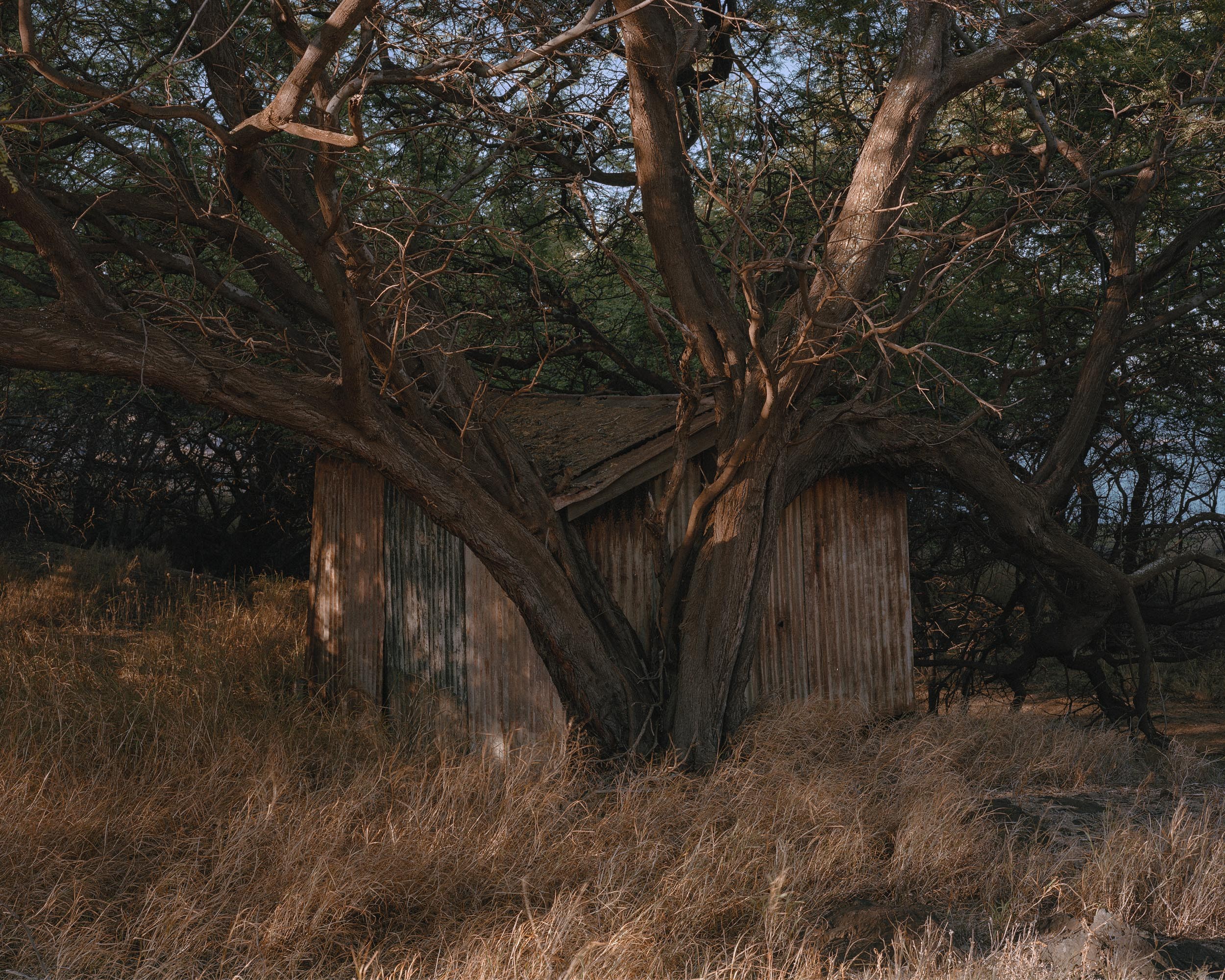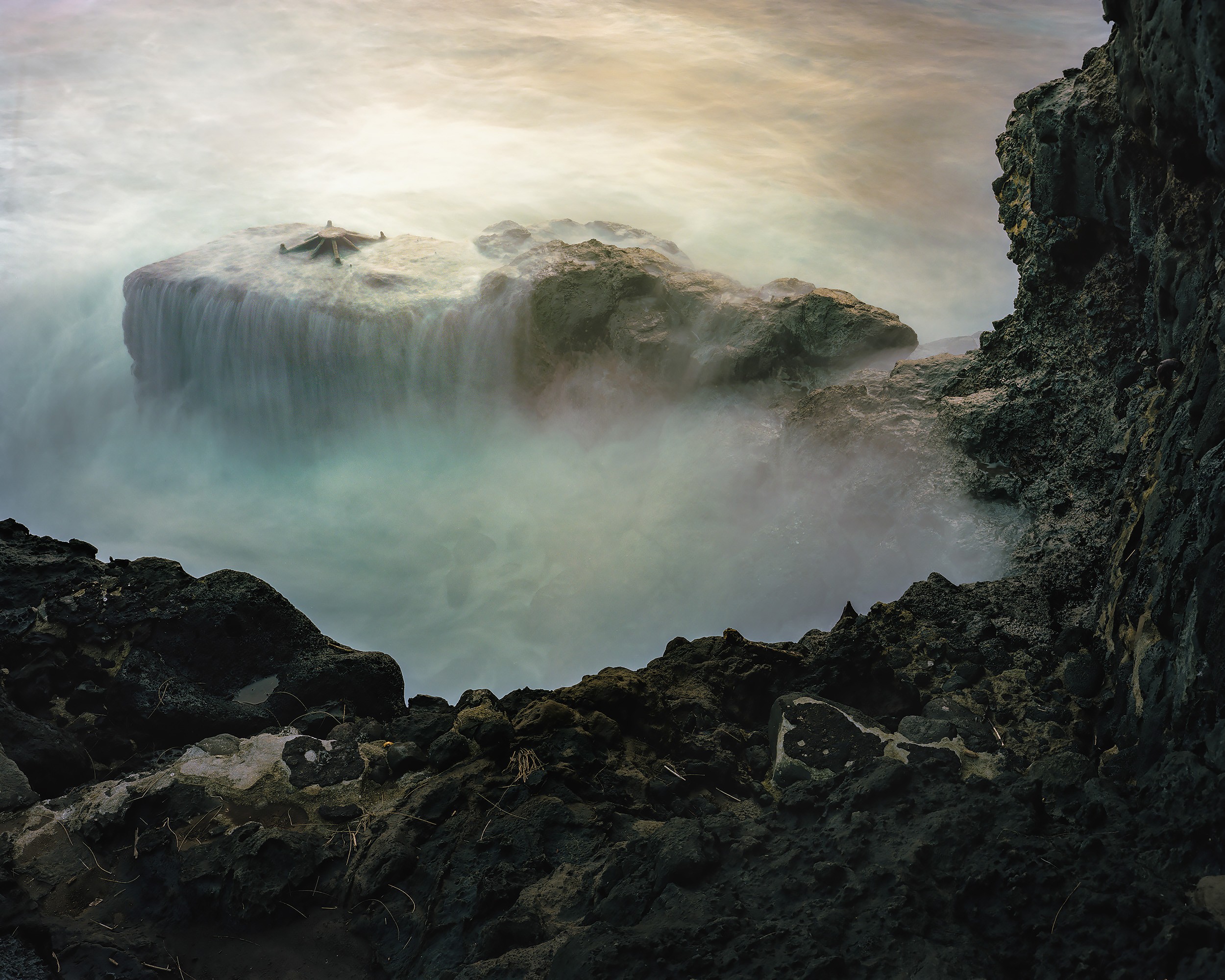We caught up with the brilliant and insightful Matt Shallenberger a few weeks ago and have shared our conversation below.
Matt, thanks for taking the time to share your stories with us today So let’s jump to your mission – what’s the backstory behind how you developed the mission that drives your brand?
Having a ‘mission’ as an artist is obviously critical but often elusive. Sometimes it changes with each project, and for me, develops alongside the project. In ‘The Leaping Place,’ a series of images made in Hawai’i, the project began as a personal exploration of my own family history. My family immigrated to Hawai’i from the Portuguese Azores in the 1880s, and I wanted to use my tools as a photographer to connect to that history. Very quickly the series evolved in to an investigation about how stories are told; within my own family there were scattered oral histories. Within Hawaiian cosmology there are complex oral histories, but also very unique modes and tools in the telling itself. And so it wasn’t until halfway in to the project that the mission developed: Can I tell a small, personal immigrant story using the techniques of another medium and another people who inhabited the same landscape? Does landscape inform how stories are told?
As a landscape photographer, I’m often trying to communicate ideas that are deeply buried, or trusting that they’re somehow inherent in the character of the landscape. Finding a mission that is itself about storytelling was appealing to me because it engages so directly with the question of how and why I make photographs and whether or not they’re successful.


Matt, love having you share your insights with us. Before we ask you more questions, maybe you can take a moment to introduce yourself to our readers who might have missed our earlier conversations?
I’ve worked mostly as a large format landscape photographer for the past 20 years. My father was a wildlife photographer, so I had some experience making photographs with him, but I’m mostly self-taught. Each of my projects begins as an attempt to reinterpret a piece of art from another medium, usually poetry or mythology. I’ve found that that gives structure and cohesion to a series, and a creative focus for me.
My projects have gotten more long-term and ambitious over time. My most recent project, ‘The Leaping Place,’ explores mythology and landscape on the big island of Hawai’i, and comprises about 30 photographs, ultimately realized in a book and an exhibition at the Honolulu Museum of Art.
I am most interested in trying to relate the character of a place rather than a particular moment in time. I want to make photographs with which a viewer’s relationship can change and develop over time. I’ve found that the slow meditative process of large format photography best suits my sensibility and my goals.



Can you tell us about a time you’ve had to pivot?
While I almost always answer, ‘What do you do?,’ with ‘I’m a photographer,’ I’ve also worked other jobs along the way, some for many years. I was an actor before becoming a photographer, and am now working to publish a couple childrens books. While they’re all under the umbrella of storytelling, they each have unique challenges and are all speculative and risky. There is obviously in some people a creative storytelling need that must be fulfilled, but I think there are many ways to get there, and every time I’ve pivoted (there have been many), I’ve found that art-work informs and evolves other art-work. I’m a better photographer because of what I learned as an actor and a writer and vice versa. Sometimes the pivots were financial, sometimes they were creative. Sometimes I wish I had wanted to be the same thing since I was a kid and could just pursue that, but most often I’m grateful for the curiosity and desire to learn. Sometimes it takes a new challenge to give perspective on an old one.
We’d love to hear the story of how you built up your social media audience?
While I think consistency and vision are important in maintaining an audience, I think some personal diversity of approach is ok when building that following. (I think) people want to engage with someone’s vision emotionally, to feel like they’re part of it, so showing more of the ‘personal’ side of the creative process is important. Maybe it goes without saying, but I often see very cool social media presentations of products or brands but don’t feel much personal connection to them without some exposure to the people who make them. And you can always switch it up on social media. If people are following you more than they’re following a product, then they’ll follow you to the next product, too.
Contact Info:
- Website: Www.mattshallenberger.com
- Instagram: Mattshallenberger
Image Credits
Matt Shallenberger


